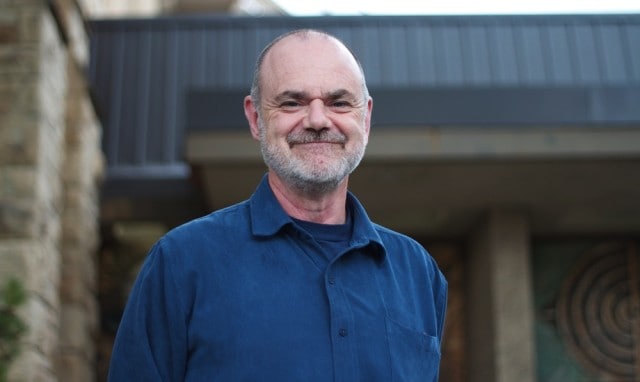ALEX ANDERSON

Ethan Vishniac, husband of President Ilene Busch-Vishniac, has taken a job as a professor in the physics department. He’s also editor-in-chief of The Astrophysical Journal, which he runs out of the Education Building.
When Ilene Busch-Vishniac was appointed president of the University of Saskatchewan, the school cashed in on a two-for-one deal.
Her husband Ethan Vishniac — a well-known astrophysics researcher — also moved to campus and joined the department of physics as a professor.
Vishniac was a faculty member at John Hopkins University in Baltimore, Md. during the early 2000s and was more recently director of the Center for Astrophysical Sciences and a professor of astronomy at McMaster University in Hamilton.
Now he’s happy to call the U of S home.
“Saskatchewan [has] opportunity right now because of its economic strength. The university is better situated economically than [many] other research universities,” he said.
Vishniac’s best-known work involves the study of shockwaves. In the 1980s, he demonstrated that expanding shockwaves would be subject to an overcompensating stability, now referred to as Vishniac instability.
He’s also the current editor-in-chief of The Astrophysical Journal.
The Astrophysical Journal is a peer-reviewed astronomy and astrophysics journal that was founded in 1895. It publishes regularly online and prints three 500-page issues per month.
Vishniac spends a lot time each week thumbing through submissions, but he has a team of other editors and peer-reviewers who help read articles and publish them online.
The journal publishes immediately to the web to further facilitate collaboration. It can be accessed for free online by researchers in Beijing, for example, almost as easily as here in Saskatoon.
Vishniac is looking forward to teaching Astronomy 103 next semester.
“I love teaching,” he says. “My favourite part is when students raise [conversation] to me after class or ask a question that shows they’re thinking about the material.”
Vishniac started reading science fiction in grade six and got hooked on what he calls “the style of physics.”
“It’s about taking very simple ideas and applying those ideas very broadly. Then you gradually build up layers of complications that point to your situation,” he said.
“In a lot of cases the simplest idea actually helps you understand what is going on. A good physicist has to like a simple answer but not rely on it too much.”
Vishniac was first exposed to astrophysics by his father, Wolf V. Vishniac, who worked as a biologist with NASA’s Mars Viking Lander program throughout the 1960s and 1970s. He developed a device that could detect signs of life, which was equipped on the Viking 1, which went to Mars.
Wolf. V. Vishniac died after falling into a crevice while doing research in Antarctica. The Vishniac crater on Mars was later named in his honour.
—
Photo: Kris Foster/On Campus News